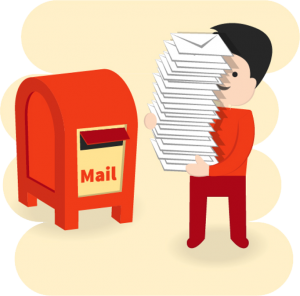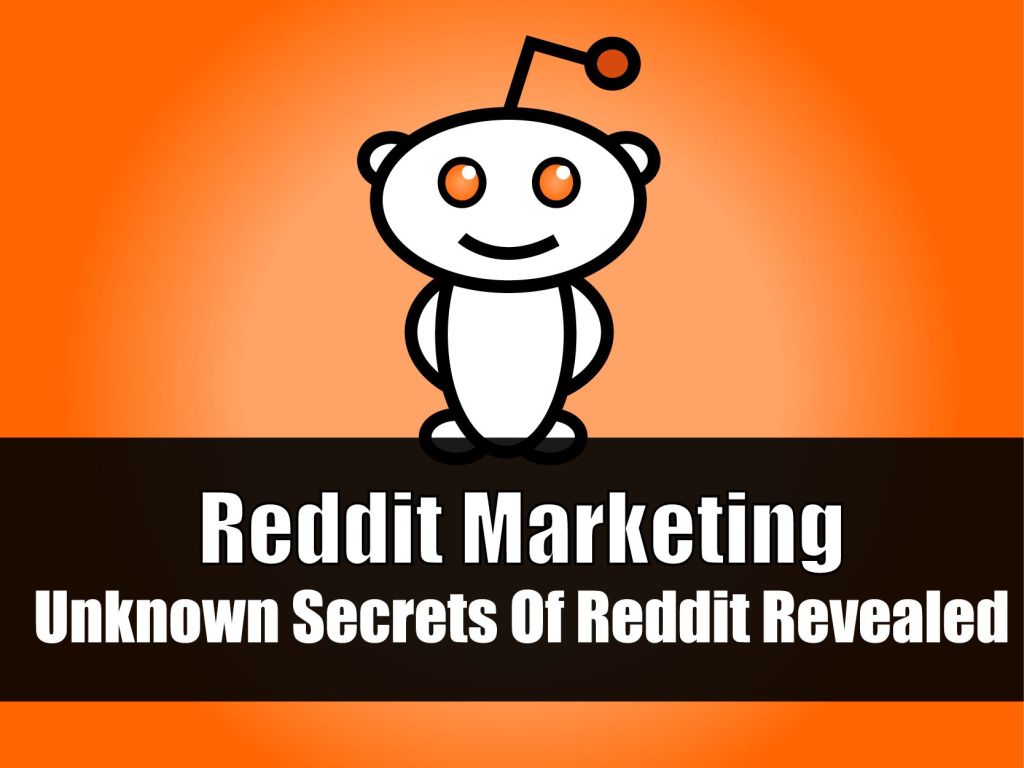
Of course, not everyone struggles to reach these different stages. Some people skyrocket to success in a few weeks, other people do well with traffic levels but not with your mailing list.
This particular blog has well over 10,000 people on the mailing list and gets a few thousand visitors per day.
In this post I’m going to show you a few really cool lessons I’ve learned while building it up to this level – a level that I think it genuinely attainable by any blog.
Let’s do it.
How to get to that magic 10,000 email subscribers mark
As always, I’ve probably forgot a lot of really cool things.
1. You need a strategy
Without an overarching strategy you are just blogging blindly. I spend a lot of time working on my blogging strategy because it gives me a laser-focus for what I want to achieve in the short and long term – and I know exactly what outcome I want from every article that I write. If you want more email subscribers you need to make it part of your strategy.
2. Your traffic sources matter
Some niches prefer Google traffic, others prefer referrals. Either way, you need to figure out which one works for you and go after it. Not all traffic is created equal. If you aren’t getting conversions it might be because of the places your visitors are coming from.
3. You need your own host
If your blog is on a free host with a free domain name you are shooting yourself in the foot from the start. It’s time to start a WordPress blog on your own host and make use of all the plugins and extra features that this allows you. Do it early, before it’s too hard to move.
4. A fast blog can make a huge difference
Speed matters not only for Google rankings but also for conversions. This study showed that for every second your blog takes to load you lose a massive amount of conversions. Figure out how to make your blog faster – it might mean a new host, a cache or some tricky coding fun.
5. Making friends will make or break you
The people that you connect with (both blog owners and readers) will make or break your blog. The more genuine connections you can make the more likely you are to grow a blog quickly as they help promote it and give you the right advice.
6. Free eBooks and courses still work well
Offering a free eBook to email subscribers still converts better than offering nothing. People are reading eBooks more than ever thanks to all our new portable devices. If you can give them something good you’ll make an instant impact.
7. You need to use Aweber or similar
Aweber is a service that hosts your email subscribers, lets you send them a free eBook after they subscribe, gives you access to a huge number of stats and also lets you design your own opt-in forms. It’s not hard to use and makes a huge difference to how a professional blog can function.
8. Costs add up
Website hosting, email subscriber hosting, advertising, purchasing images, etc. all adds up. A blog like this one costs around $300+ a month to keep online. Unless you are making a strategic income from it the costs can make it not worth while.
9. Your goals are important but can often change
It’s extremely important to have goals for your blog or website but it’s also important to make sure that they change if they need to. If something isn’t working and you’ve given it a lot of time and effort than it’s sometimes better to be strong and let it go and try something else.
10. You still have to sell the list
Just because you have a mailing list doesn’t mean that people will automatically subscribe. Don’t just stick a form in your sidebar and hope that people will give you their details – sell it. Mention it in posts, develop landing pages, talk about it in your guest posts. You need to let people know what’s going on.
11. Split testing can change your business
Glen wrote a really good post about split testing and how it can literally grow your conversions/income by 1000%+. You can split test your landing pages, your opt-in forms, your mail outs, etc. and see which versions works best. It’s easy to do nowadays so there really isn’t an excuse not to. Just make sure you’re testing things that matter and giving them enough time to show meaningful results.
12. Write on other blogs more than you write on your own
A lot of bloggers just write on their own blog and then wonder why no one is reading it. Well, it’s probably because no one knows it exists! Use guest posts as a starting point to get your name out there. Write more on other blogs than your own until you have a big reader base.
13. Text is great but other media is growing
Writing is, in my opinion, still the most powerful form of content on the net. People read a lot and not everyone can watch videos at work. But things like podcasts, videos, info graphics, etc. can play a huge role in getting you new and improved traffic.
14. SEO is dangerous
Relying on Google for anything is, as I’ve said before, a really stupid idea. They constantly change their algorithm and cause websites to go from fame to misfortune and visa versa. Play around with it and obviously try to do all the right things when it comes to blogging SEO and getting heaps of traffic but don’t ever rely on Google for your main source of income alone.
15. Advertising is a good idea
Dabbling in advertising can produce some really cool results. You don’t have to spend much. Try out Paid Discovery on StumbleUpon to give your posts a bit of a boost. There is nothing wrong with promoting your blog in this way.
16. Colors make a difference to conversions
Things as simple as colours can have a huge impact on how well your product or opt-in form convert. Again, you want to split test this stuff but I’ve noticed big changes in sign ups when switching my sidebar button from green to red and so on.
17. Social proof works in different ways
My friend wrote a really cool post on how different types of social proof can influence people in different ways. He explains it a lot better than I’m going to so have a read of the article and try to test whether social proof statements like subscriber counts are right for your blog.
18. Less is not always more
The idea that less is more is rarely true for a blog. You want more traffic, more subscribers, more sales. Of course, if the traffic isn’t any good it won’t make a difference, but try to to use ideas like “a small number of loyal subscribers” to stop you from growing a mailing list with a HUGE number of loyal subscribers.
19. Research is important
I spend a moderate amount of time researching keywords and competition before I write a blog post. It makes a huge difference about where I rank and how well the post is received. I show you my methods for this in Subscriber Special Ops – but until that opens up you might want to figure out your own ways to research before you write.
20. Pop ups work
I don’t care what anyone says.

21. HelloBar is a great way to divert traffic
The bar at the top of this site is called HelloBar – a website/tool owned by Neil Patel that lets you put a message and a button up top and then split test two different versions. It’s a really cool way to divert traffic to a landing page or a mailing list sign up area. And it works really well.
22. Trying new things can inject a bit of magic
As I wrote in a recent post, sometimes you just need to do and try new things to see huge changes take place on your blog. You might not always know why it’s working but trying new things and failing is better than being stuck at a plateau for months on end.
23. Tracking and stats give you real insights in to what’s working
The statistics that you get in Aweber, Google Analytics and so on give you valuable insights into what is working. You can even use services like Crazy Egg to see where people are looking and clicking on your website. This stuff takes out a lot of guess work and lets you focus on real metrics.
24. You need to be different
Being different is the most important thing you can do online. Find a way to make your brand stand out from the crowd and then push that difference as often as possible.
25. What works on their blog might not work on yours
Sometimes I have “borrowed” ideas from my blogging icons after hearing how well it works for them only to find that it completely tanks for me. It’s a good lesson – what works for one blog doesn’t always work for another. And, yet again, this is why you need to split test different ideas and make sure what you think it the source of a success is actually the true source.
26. Find different reasons to mention your list
At the top of this post I mentioned that SSO was closed but that it would be open again soon and be announced to the mailing list. Moments like that are a very powerful way to get new email subscribers. Find different methods like that to work your mailing list in to your content and you’ll see new and curious subscribers on your mailing list.
27. Explain it in a really simple way
A lot of people who visit your blog will have absolutely no idea what a mailing list is or why they might want to give you, a total stranger, their personal email address. Spell it out for them very clearly, whenever you can.
28. The successful strategies change regularly
Something that I’m really only just learning is that successful strategies change regularly. I used to try to be really conservative with my online stuff because I was worried about compromising a “long term” blog for short term gain. But, what I’m seeing now, is that most of the successful people go after lots of little short term things and push them hard while they are working.
29. Don’t sell too early
Once you get to a certain level of subscribers it can be tempting to sell your blog/website and make a quick dollar (or 20,000). But what I sometimes regret is that I didn’t stick with that blog because I reckon it would probably be pulling in at least $100,000 a year by now. Just because you’ve reached one of those milestones, don’t sell up.
30. The homepage header works
You know those blogs that have the first half of their homepage devoted to an opt-in form? Those things work. I’ve heard of people who have them converting at 10% of all homepage traffic. You can get one of these added to your blog by a good designer and coder probably for a couple of hundred dollars.
31. Don’t forget mobile death windows
Not everyone can afford a beautiful responsive theme and some of us are too lazy to launch their beautiful responsive theme (guilty). But at least make sure your opt-in forms and pop ups work for mobile users. For example, if you use the lightbox version of the pop up you might find that people on iPhones have trouble closing the pop up and thus might exit your site without reading your content.
32. Target your offer in different segments
One thing you can do in AWeber is create different segments. So, you might have one landing page that lets people subscribe to your updates, another landing page that let’s people subscribe to updates only about “watermelons” and so on. By doing this you can target your offers and go after selective sources of traffic to ensure you’re really honing in on what people want.
33. Be consistent in your mail outs
One thing that I have learned the hard way is that inconsistency really gives subscribers the shits. If you tell them that they are going to get updates once a week don’t send them updates three times a week. You’ll lose them very quickly.
34. Email subscribers often hit “spam” first
Related to the last point, often you’ll find that an email subscriber will mark an aggressive or inconsistent email campaign as “spam” as opposed to just unsubscribing or deleting that particular email. Perhaps it makes them feel better but more likely it’s just easier to send it all into the spam folder dungeons.
35. Don’t be afraid to lose lots of subscribers
And now to throw a spanner in the works from the last three points – don’t worry about losing lots of subscribers. Every time we send out an email to the list we lose between 30 and 60 subscribers. That’s good. It means you’re getting rid of people who aren’t interested/aligned to your content.

36. What gets people to open an email might not get them to click through and buy
I ran an email campaign recently where I split test two different subject lines. The first email had an open rate of 41% and the second email had a dismal 26%. The funny thing was that the second email converted better than the first. I think this shows us two things: noise (attention grabbing tactics) doesn’t always lead to conversions, and that split testing is vital.
37. WWSGD?
There is a really cool plugin called WWSGD which stands for What Would Seth Godin Do that puts a little dialogue box at the top of your post and welcomes people based on cookies – new visitors get a message that old users don’t. But you can take this further. For example, if you came from Twitter you might get a message like “Hey there Twitter user! Check out our posts on getting the most out of Twitter”. These types of WordPress plugins are an amazing and easy way to attract more email subscribers by getting people deeper in to your content.
38. Tell me why I don’t like Mondays (but Sunday is okay…)
I’ve also found out that Monday is terrible for new posts, even though some people say it’s the best day. For me the best days are Tuesday and Wednesday but test for yourself.
39. Always be tired
Generally I find that the best traffic is around 9am East Coast time which tends to be around midnight in Australia – unless it’s daylight savings. Sure, I could set an automatic scheduler but I find that readers really love chatting to me in the comments section and if I’m in bed I get a lot less interaction. So – always be tired.
40. Redirect those comments
One of the coolest things I ever did on this blog (and one of the most popular and widely copied posts on my site) was redirecting comments to a “thank you” page using a simple plugin. As soon as someone leaves a comment for the first time they’ll get redirected to a little page that thanks them for their interaction and shows them the mailing list and some other cool content. It converts at around 7%.
41. Be genuine
Unless you can make all of this come together in a genuine way you’ll find that your readers will know. People are looking for a place/person to connect with – offer them genuine friendship through quality content and you’ll grow in leaps and bounds.
What has worked for you?
Growing an email list is one of the most important aspects of a successful blog. It is your mailing list that allows you to promote your content, sell products and launch new projects. So, what has worked for you? Leave a comment and let me know if I’ve missed anything obvious.
Chuck Reynolds
Contributor
The info shared here has not been evaluated by the FDA and is not intended to diagnose, cure or treat any illness or disease.













